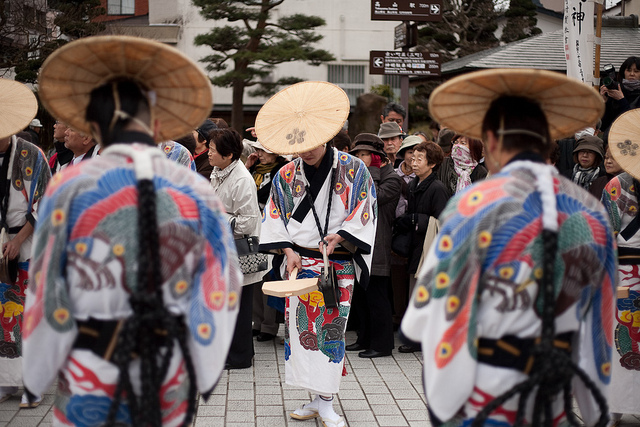May 30, 2017
Sanno Matsuri, One of Tokyo’s Three Most Important Festivals
When it comes to festivals (matsuri), nothing can quite beat Japan in the summer. Pretty much every town and city will have one, and Tokyo, being the cultural (and pretty much geographical) epicenter of the country, has more than its fair share.
One of the capital’s three most important matsuri – along with the Kanda Matsuri and Fukagawa Matsuri – is the Sanno Festival that takes place in June and is held in Chiyoda’s Hie Shrine.
History of the Sanno Matsuri
The Sanno Festival has auspicious beginnings going back to the early years of the Edo period, when Tokugawa Iemitsu (1604-1651), the third shogun of the Tokugawa dynasty and grandson of Tokugawa Ieyasu, worshipped at the festival (which at the time was known as Tenka Festival). Under the patronage of Iemitsu, the Sanno Matsuri became one of only three festivals that were allowed to enter Edo Castle (now part of the Tokyo Imperial Palace).
The Sanno Festival, with its close ties to the Tokugawa shogunate, quickly became one of the more popular festivals of Edo. However, with the collapse of the bakufu following the Meiji Restoration, and then the declassification of shrines coming with the US occupation, it has since declined in its pomp and ceremony. In spite of this it remains one of the three great Shinto festivals of Japan, and its draw has more to do with tradition than its size as it continues to be of great importance and an interesting glimpse into Japanese cultural history.
About Sanno Matsuri
The Sanno Matsuri takes place every year in mid-June, however its full pageantry and splendor is only seen on even years. The reason for this is said to have been a bakufu decree aimed at tempering the arguments and occasional violence that arose between the festival’s organizers and those in charge of the rival Kanda Matsuri (with the latter thus celebrating on odd years).
The festival takes place over eleven days with various activities on each day, however the main event on the even years is the parade that usually takes place on the Saturday. Here, around 300 people form a procession some 600m long dressed in traditional costume with musicians, portable ‘mikoshi’ shrines, dashi floats, and riders on horseback, all setting off from Hie Shrine at 8:00 in the morning. The parade gradually winds its way around the area, passing by the Yotsuya train station and Yasukuni Shrine. Before noon the the ensemble arrives at the Imperial Palace where it stops for about half an hour while the mikoshi are involved in religious ceremonies. The chief priest enters the palace to offer prayers to the imperial family, which is a rare honor afforded to the festival. From there the parade continues and returns to Hie shrine before 17:00.
Sanno Matsuri 2017
This year’s edition will unfortunately not feature the magnificent mikoshi, but is still packed with a whole raft of other events, including the chigo-gyoretsu (June 11, 13:00 and 14:00), a parade with children in ornamental dress wishing for growth and health. Another religious rite is chinowa-kuguri, a purification ritual that sees participants passing through a reed ring as they pray to have their sins purified .
The program also includes classical performing arts such as dance, an orchestra, and the Sanno-taiko drums. There are also displays of ‘ikebana’ Japanese flower arrangements, as well as special tables set up in the shrine gardens so that you can enjoy a cup of Japanese tea.
- Where: Hie Shrine, 2-10-5 Nagatacho, Chiyoda-ku (map)
- When: June 7 to 17, 2017. Check the schedule (Japanese) for details.
By Mark Guthrie
Image by ZiJing (Own work) [CC BY-SA 2.0], via flickr.com (modified)
Image by Yoshitoshi (Own work) [Public Domain], via wikipedia.com (modified)
Image by chriggy1 (Own work) [CC BY-SA 2.0], via flickr.com (modified)
Image by Claremont Colleges Digital Library (Own work) [CC BY-SA 2.0], via flickr.com (modified)






About the author